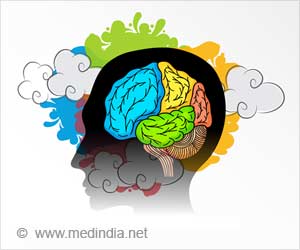Alterations in the brain of schizophrenic people and the possible link between these changes and the disease will be studied by a team from the Wake Forest University School of Medicine .
Comparison of post-mortem brain tissue from people diagnosed with schizophrenia or bipolar disorder with the tissue from normal people will be done by the team under a 5-year $1.1 million grant from the National Institute of Mental Health.The principal investigator, Scott E. Hemby, Ph.D., said the research focuses on the brain's temporal lobe, particularly on structures called the hippocampus, subicullum and entorhinal cortex that are involved in learning and memory.
"The temporal lobe is one of the primary brain regions known to be functionally altered in schizophrenia," said Hemby, associate professor of physiology and pharmacology. Changes in gene and proteins in this region have "a profound and significant influence on brain function."
Schizophrenia is a devastating mental illness affecting approximately 1 percent of the population with clinical manifestations generally appearing in late adolescence and early adulthood. Symptoms include hallucinations, delusions, disorders of feelings and general loss of the ability to function in everyday life.
Bipolar disorder affects roughly the same number of people, characterized by alternating episodes of mania – mental and physical hyperactivity – and depression, and was formerly called manic-depression.
Hemby and colleagues will use state-of-the-art genomic and proteomic methods to evaluate the expression of all genes in the temporal lobe as well as the majority of proteins that are expressed. Proteomics refers to the analysis of expressed proteins.
Advertisement
Under a separate five-year, $650,000 grant from the Stanley Medical Research Institute, Hemby and colleagues will compare the effect of six-month administration of two antipsychotic drugs used commonly in the treatment of schizophrenia and bipolar disorder – clozapine (Clozaril) and haloperidol (Haldol) – in monkeys. B The purpose of the monkey studies will be to: 1. Better understand the effects of the two drugs on gene and protein expression in the monkey brain. The plan includes assessing changes in brain structure using magnetic resonance imaging (MRI) after 5½ months of treatment.
2. Compare the monkey data with human post-mortem tissue taken from people who were diagnosed with schizophrenia and bipolar illness in which antipsychotic dugs were used as treatment.
Advertisement
"The scientific approach of comparing human post-mortem tissue from individuals suffering from schizophrenia and bipolar illness with tissue from monkeys treated with antipsychotic medications will provide a unique opportunity to delineate disease from drug effects – allowing a clearer understanding of disease-related changes."
To complete the picture of the neurobiological basis of schizophrenia, the scientists need to pin down the molecular evidence specific to the illness. In the analysis, they will be using genomic and proteomic techniques that were not available even a few years ago.
"The precision of these techniques will provide new information on how the complex neural circuitry of these regions and cell groups are altered as a function of disease as well as antipsychotic medications," Hemby said.
Source-Eurekalert
GYT











